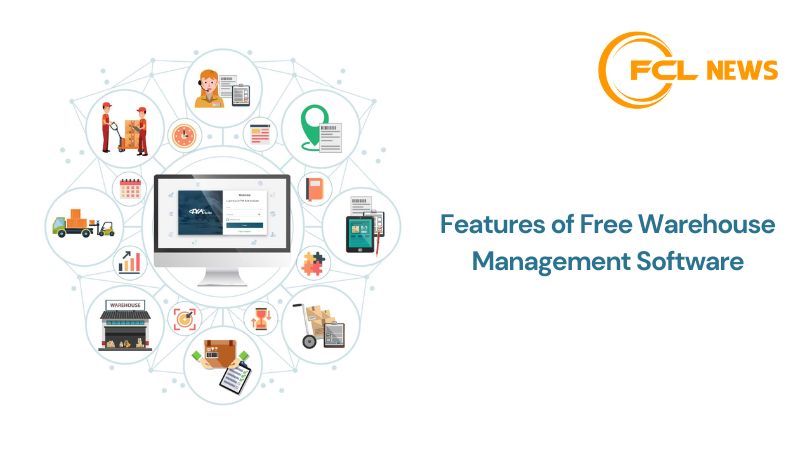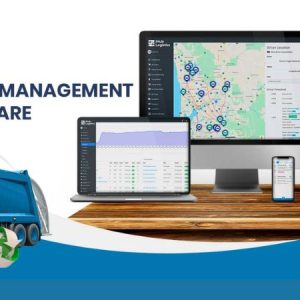In today’s competitive business landscape, efficient warehouse management is crucial for optimizing operations and meeting customer demands. For businesses seeking cost-effective solutions, leveraging free warehouse management software can be a game-changer. This article by Fanclup.info explores the benefits, features, and considerations of utilizing free warehouse management software to streamline your inventory processes.
Understanding Free Warehouse Management Software

Free warehouse management software refers to digital solutions designed to help businesses efficiently manage inventory, track stock movements, and improve warehouse operations without incurring licensing fees. These tools offer essential functionalities needed to organize inventory and streamline processes, making them ideal for small and medium-sized enterprises (SMEs) and startups with limited budgets.
Benefits of Free Warehouse Management Software

- Cost Savings: Perhaps the most apparent advantage of using free warehouse management software is cost savings. By opting for a free solution, businesses can allocate their resources to other critical areas of operation, such as marketing or product development.
- Scalability: Free warehouse management software often provides scalability, allowing businesses to start small and expand their operations without facing immediate financial constraints. As your business grows, you can seamlessly upgrade to premium versions or integrate additional features as needed.
- Improved Efficiency: These software solutions streamline warehouse processes, leading to improved efficiency and productivity. With features such as inventory tracking, order management, and reporting, businesses can reduce errors, minimize stockouts, and fulfill orders more quickly.
- Enhanced Visibility: Free warehouse management software offers real-time visibility into inventory levels, stock movements, and warehouse operations. This visibility enables businesses to make informed decisions, anticipate demand, and prevent stock discrepancies.
- Better Customer Satisfaction: By optimizing warehouse operations, businesses can ensure timely order fulfillment and accurate inventory management, leading to improved customer satisfaction and loyalty.
Features of Free Warehouse Management Software

- Inventory Management: Free warehouse management software allows businesses to track and manage inventory levels effectively. Users can categorize items, set reorder points, and monitor stock movements in real-time.
- Order Management: These solutions facilitate order processing and fulfillment by automating tasks such as order entry, picking, packing, and shipping. Businesses can manage orders efficiently and fulfill customer requests promptly.
- Stock Tracking: Free warehouse management software enables users to track stock movements within the warehouse accurately. Whether it’s receiving new inventory, transferring stock between locations, or performing stock counts, businesses can maintain accurate inventory records.
- Reporting and Analytics: These solutions offer reporting and analytics tools that provide insights into warehouse performance, inventory turnover, and order fulfillment metrics. Businesses can generate custom reports, identify trends, and make data-driven decisions to optimize operations.
- Barcode Scanning: Many free warehouse management software options support barcode scanning, allowing businesses to expedite processes such as receiving, picking, and shipping. Barcode scanning reduces manual errors and improves accuracy in inventory management.
- Integration Capabilities: Free warehouse management software often integrates with other business systems such as accounting software, e-commerce platforms, and shipping carriers. This seamless integration streamlines data exchange and eliminates the need for manual data entry.
Considerations When Choosing Free Warehouse Management Software
- Feature Set: Assess the features offered by different free warehouse management software options and determine which ones align with your business requirements. Look for solutions that provide essential functionalities such as inventory management, order processing, and reporting.
- Scalability: Consider the scalability of the software and evaluate whether it can accommodate your business’s growth. Ensure that the free version offers sufficient capabilities to support your current needs while allowing room for expansion in the future.
- User-Friendliness: Choose a warehouse management software that is intuitive and easy to use. Training your team on complex software can be time-consuming and costly, so opt for a solution with a user-friendly interface that requires minimal training.
- Support and Updates: Look for free warehouse management software options that offer adequate customer support and regular updates. Check whether the software provider offers online documentation, tutorials, and community forums to assist users.
- Security: Data security is paramount when selecting warehouse management software. Ensure that the software provider follows industry best practices for data protection and encryption to safeguard sensitive information.
- Customization Options: Consider whether the software offers customization options to tailor the system to your specific business needs. Customizable features can enhance efficiency and adaptability, allowing you to optimize workflows according to your requirements.
Conclusion
Free warehouse management software offers businesses a cost-effective solution for optimizing inventory management and streamlining warehouse operations. By leveraging these tools, businesses can improve efficiency, enhance visibility, and meet customer demands more effectively. When choosing a free warehouse management software, consider factors such as feature set, scalability, user-friendliness, support, security, and customization options. With the right software in place, businesses can unlock efficiency and drive growth in their warehouse operations.
In conclusion, free warehouse management software presents a viable solution for businesses seeking to enhance their inventory management processes without incurring significant costs. By leveraging these tools, businesses can streamline operations, improve efficiency, and ultimately, drive success in their warehouse management endeavors.




